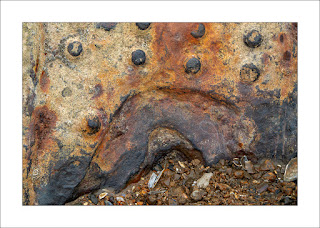Hunstanton is one of few locations on the east coast of the UK that faces to the west. This is due to it position on The Wash and makes it ideal for sunset photography. It also has a very distinctive three-toned cliff face consisting of orange sandstone at the base, a layer of red limestone and then the upper white chalk layer.
My first photography visit to Hunstanton was in 2007. At this time I was using a Canon 20D and a 18-55mm kit lens for my landscapes. I only mention this because I looked back at some of my old shots from this visit and was surprised at how small the file sizes were; I even checked to see if I had reduced them from the original RAW file. When I looked up the 20D's specification, I was reminded that it was only an 8.2 megapixel DSLR, which was good at the time, and demonstrates how far camera technology has move on in the last 10 years. Despite the file size, I quite like some of the results from 2007 and I picked this one as an example:
For my latest visit, I didn't get much in the way of evening sunlight - it was a bit flat. In 2007 I would have probably cursed the weather but now my photography tastes have changed and I was happy to look at the detail of the three-toned cliffs and in particular the level of erosion.
I was actually surprised at the amount of rock debris below the cliffs, more than I remember from previous visits, and the cliff face looked particularly unstable in places (see below). This led me to wonder whether things had got significantly worse over the last 10 years and I tried to find the answer on the internet. I found reports of some damaging storm surges during this time and many references for the need to protect this part of the coast from further erosion, but I failed to a specific measure for the Hunstanton cliffs:























































